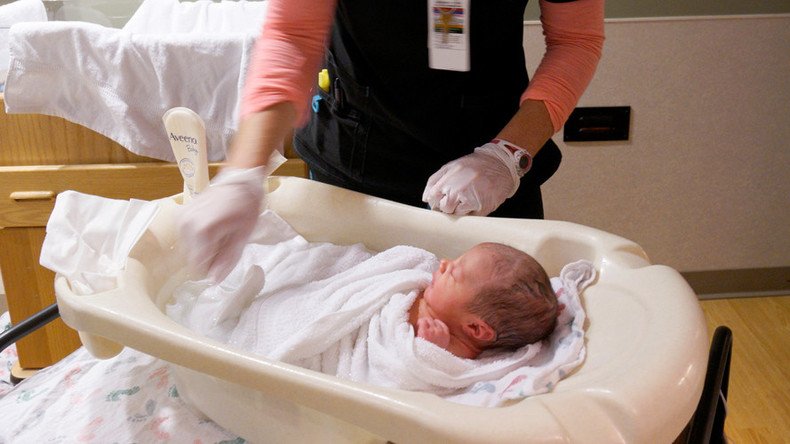Debt & childcare costs drive US fertility to historic low

The US fertility rate has edged down to a record low, as young Americans choose to postpone or not have children. The US has seen a steady decline in fertility since the 2007 economic recession.
The so-called general fertility rate in the country is 62.0 births per 1,000 women ages 15 to 44, according to data released by the Centers for Disease Control and Prevention (CDC).
The trend is driven by a decline in birth rates for women in their 20s, whereas the birth rate for those in their 30s and 40s has increased — but not enough to make up for the lower numbers in younger women.
Even though among other developed nations the fertility rate in the US remains relatively high, births have been in continuous decline since the economic recession of 2007, shows data from the National Center for Health Statistics, which is part of CDC.
Some are concerned that this could spell problems for the economy in the future, as the country may not be able to replace the aging workforce and have enough tax revenue.
The decline in birth rates among younger Americans is partly driven by more women seeking higher education degrees and subsequently striving to find work in their 20s.
But it may not be just because they choose to postpone childbearing.
Many young Americans graduate with massive student loan debt, as the cost of higher education has skyrocketed. Student loan debt has grown more than auto loan, credit card and home equity loan debt combined since 2003, according to the Federal Reserve Bank of New York.
Almost 40 percent of young Americans live with their parents or other relatives – the largest percentage since 1940, says an analysis of census data by real estate tracker Trulia.
Meanwhile, raising a child in the US is more expensive than ever, according to a January report by the Department of Agriculture.
The average annual cost of center-based child care in the country is $9,589 per child, which represents 85 percent of the yearly median cost of rent, the New America think tank reported.












